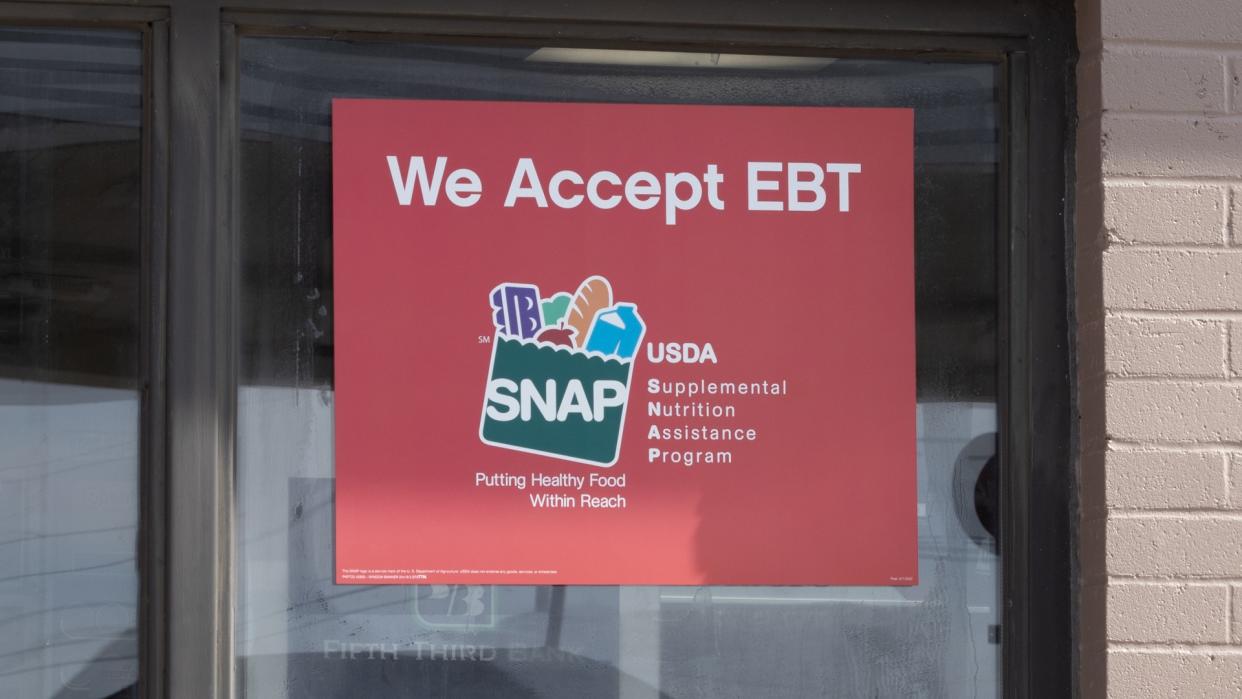7 Food Stamp Mistakes People Make

Formerly known as food stamps, the Supplemental Nutrition Assistance Program (SNAP) helped nearly 42 million Americans cope with food insecurity in 2021. But millions are still missing out on benefits despite being eligible, and many more aren’t getting the most out of the benefits they are receiving. Here’s a look at the most common mistakes that keep qualifying people from collecting benefits and that keep beneficiaries from maximizing their SNAP payments.
Food Stamps Schedule: May 2023 — When SNAP Payments Distribute
Learn: How To Build Your Savings From Scratch
Thinking You Can’t Apply For Other Programs
According to the National Council on Aging, around 5 million seniors who are eligible for SNAP are missing out on benefits. Many of them might not be applying because they presume that they can’t collect Social Security and food stamps simultaneously — but they can.
Although the USDA counts Social Security payments as regular income when determining eligibility, participation in one program does not preclude you from the other. In fact, you can apply for SNAP at your local Social Security office.
You can also receive SNAP while collecting SSI benefits, receiving Medicaid, living in Section 8 housing or participating in any other assistance program as long as you qualify.
Food Stamps: Do People on SNAP Need To Work Full Time?
Not Maximizing Deductions
The USDA determines SNAP eligibility by income and the number of people in your household. Many people who might be eligible don’t apply because they don’t meet the income threshold. But the USDA allows for several deductions that could help you qualify even if you earn more than the income limits allow. Deductions include:
A 20% earned income deduction
A standard deduction based on household size
A dependent care deduction
Non-reimbursed medical expenses over $35 per month for seniors or disabled household members
Child support payments (in some states)
A shelter deduction for homeless households (in some states)
Not Knowing What You Can Buy
The USDA does not allow SNAP recipients to buy certain items, including alcoholic beverages, tobacco, vitamins, pet food, hot food and live animals.
But many beneficiaries mistakenly believe that they can’t use food stamps for junk food like candy and snacks, but the truth is that SNAP can satisfy your sweet tooth. On top of standard grocery items like produce, meat, dairy, bread and cereal, the USDA allows the purchase of a wide variety of so-called “accessory foods,” including chips, pretzels, popcorn, candy, ice cream, doughnuts, brownies, mints, chocolate, soda, nonsupplement energy drinks and many other nonstaple items.
Not Using Coupons and Cash-Back Apps
It’s common for SNAP recipients to believe they can’t use coupons, but according to the USDA, “Supplemental Nutrition Assistance Program (SNAP) clients may use cents-off coupons issued by a manufacturer or store.”
They’re also free to use coupon and cash-back apps like Ibotta, Rakuten, Coupons.com and Fetch Rewards.
Cash-back apps like Ibotta can come in doubly handy because they give back money that shoppers can then use to buy necessities that SNAP won’t pay for like diapers and medicine.
Not Shopping According to a Plan
The USDA maintains a list of links and resources that help all shoppers get the most bang for their buck at the grocery store. Meal planning is at the heart of smart shopping — and SNAP recipients stand to benefit the most.
By planning out your week’s meals in advance, you can head to the grocery store knowing exactly which ingredients you need, saving you time and preventing wasteful spending.
The USDA’s list includes several weekly meal-planning templates to help you get started, and you’ll also find shopping tips, sample menus and more.
According to ABC Action News, shoppers can save hundreds of dollars on grocery bills and avoid impulse shopping by planning just three to four dinners per week.
Skipping the Farmers Market
The USDA maintains an updated list of the hundreds of farmer’s markets across America that accept food stamps — and all SNAP recipients should consider that option. According to CNBC, farmer’s markets were historically more expensive than supermarkets, but high inflation has pushed prices up at the grocery store faster than at the local community market.
There is now significant price parity between the two, and in some cases, farmer’s markets are even cheaper. If prices are close, your EBT money might be better spent at a farmer’s market because the fruits and vegetables you find there are usually fresher — and therefore more nutritious — than what you’d find in the supermarket produce aisle.
Missing Out on SNAP-Focused Discounts
Amazon offers SNAP recipients half-price Prime membership. Museums For All offers beneficiaries free or reduced-price admission to more than 900 museums across the country. Many YMCA chapters also cut the membership cost for SNAP recipients.
But that’s by no means the whole list.
If you’re eligible for SNAP, you probably qualify for the FCC’s Affordable Connectivity Program, which supplements household broadband costs, as well as the Lifeline program, which gives out free tablets. Lime offers discounts for its bike-sharing program, as does Citi Bike — and the list goes on and on. If you receive food stamps, you probably qualify for discounts on all kinds of products, services and programs from corporations, nonprofits and public agencies.
Low Income Relief maintains a list of more than 300 discounts available to SNAP recipients.
More From GOBankingRates
This article originally appeared on GOBankingRates.com: 7 Food Stamp Mistakes People Make
